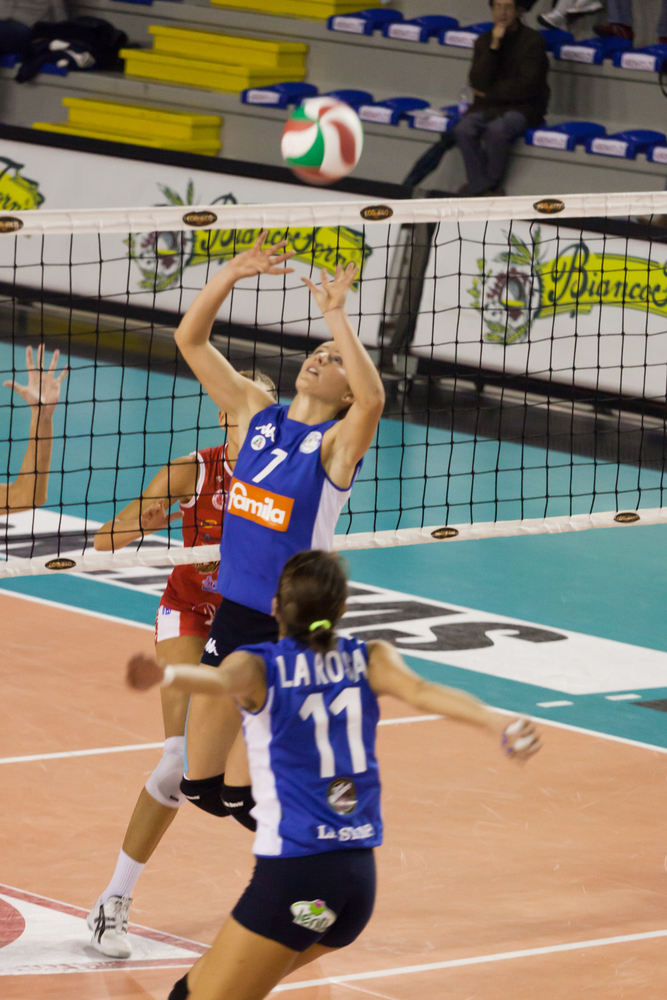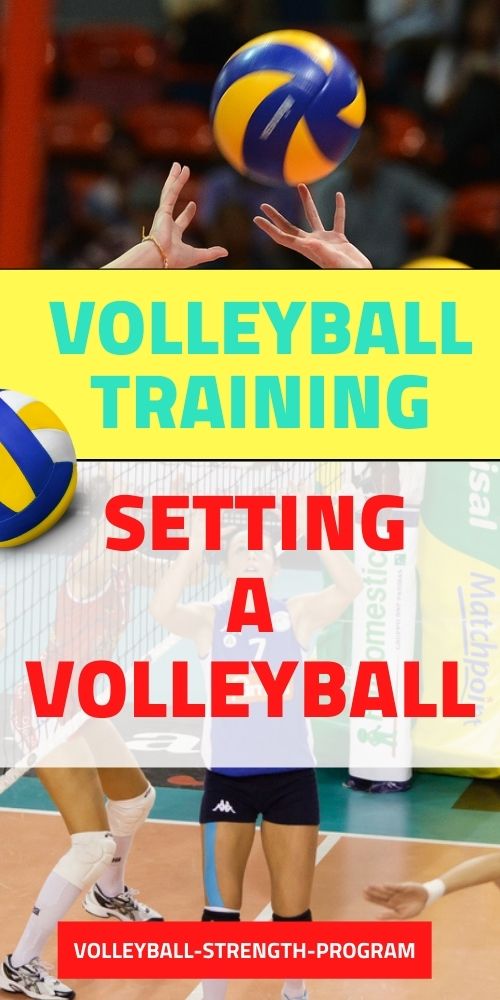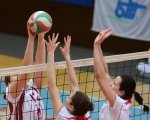Setting a Volleyball
Setting a volleyball can be a difficult skill to master if you aren't taught the correct technique.
To be successful at setting a volleyball, you need to understand the rules and the two main techniques for setting.
Two Setting Techniques
- The most common way to execute the set is by using the hands to set the ball.
- The other way to set is by using the forearms.

For hand setting, focus on taking the ball high up overhead with both hands contacting the ball at the same time. Think of creating a basket for having the ball land in your hands. So as the ball comes down, have the hands in the shape of the ball (make a basket shape with the hands).
To be good at hand setting, you need to focus on contacting the ball with both hands at the same time. And it's the fingers (not the palms) that make contact with the ball. You want the ball to get in and out of the hands fairly quickly.
The other way to set is by using the forearms to direct the ball to the hitter. Forearm setting (bump setting) is a lot like forearm passing. However, with bump setting you are contacting the ball with forearms parallel to the ground. So, the forearm platform is much higher than the platform would be for passing a served ball. It's the angle of the platform that is key. You want the platform higher so the ball will go up high so the hitter can get underneath the ball.
Setting Rules You Need to Understand
Anytime you direct the ball with the fingers you should be concerned about how you contact the ball. For example, if you don't make contact cleanly when using the fingers (meaning you have multiple contacts on the ball), then you're at risk of referee calling an illegal double contact.
So, when setting a volleyball with the fingers, focus on releasing the ball in such a way that the ball doesn't spin (rotate in the air). The less the ball rotates, the less likely the referee will make the call.
A good way to help prevent double contacts is to focus on contacting the ball with all the fingers. Also, before you contact the ball, always have the hands in the shape of the ball. After you set the ball, focus on keeping your finish position the same as your start position. This will help you prevent double contacts on the ball.
If you are struggling to hand set, bump setting is an option. To bump set effectively, always remember to keep the platform high (unless you are sending the ball a long distance across the court). And it's also a good idea to face where you are setting the ball. So, remember to square to your target area (usually the left front attacker) every time you set. If you are bump setting the ball back, then square the shoulders to the hitter that's behind you (or at least square to where you want to send the ball).
For hand setting, always square up to the left front attacker (even when back setting the ball). Consistently squaring to the left front will allow you to...
1) be more deceptive with your setting (the opponent will have a tougher time reading your set and
2) you will develop a consistent technique for setting which leads to more consistent and accurate placement of your sets.
Now, squaring for bump setting... always square the direction you are sending the ball. So this means for bump setting back, it's easiest to square to the right side hitter.
Goal for Setting a Volleyball
The purpose of learning how to set is to develop techniques for sending the ball to an attacker.
As you improve at setting a volleyball, always be focusing on being able to give the hitter a hit-able ball to attack.
Volleyball is won by the team that is best at attacking the ball. A team may be good at defense, but if they can't attack effectively after they have made a great defensive play, then they won't end up scoring without a successful attack.
If you enjoyed these tips and would like to keep it close to you at any time, just save this pin to your Pinterest Volleyball Training Board.
Volleyball › Volleyball Techniques › Setting
ACCESS MY STRENGTH SECRETS




